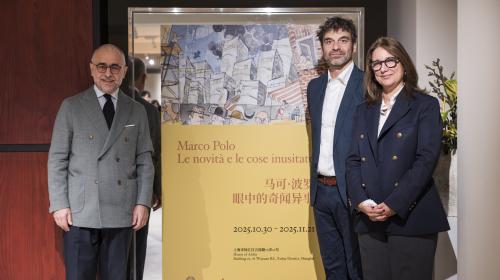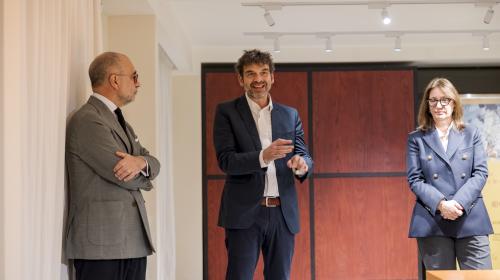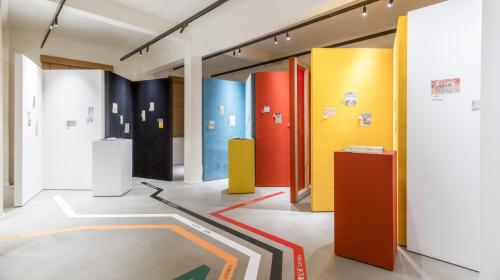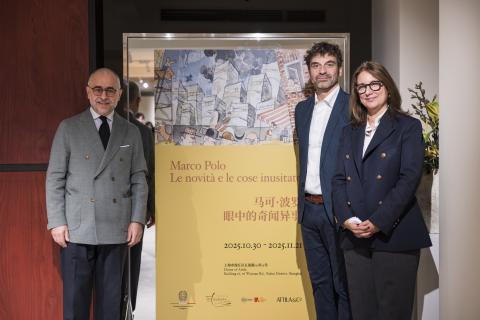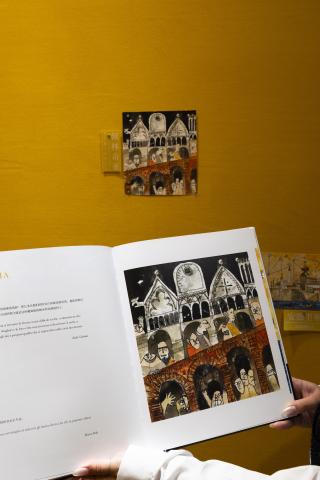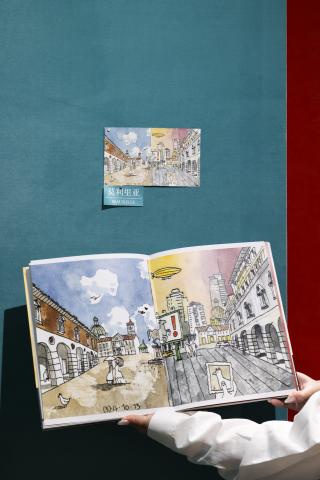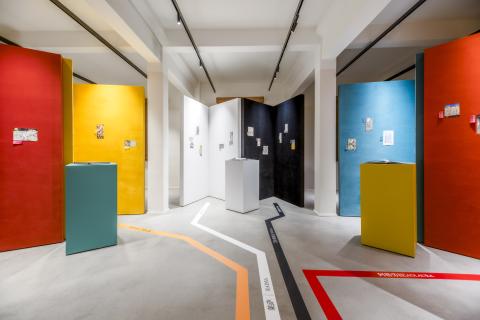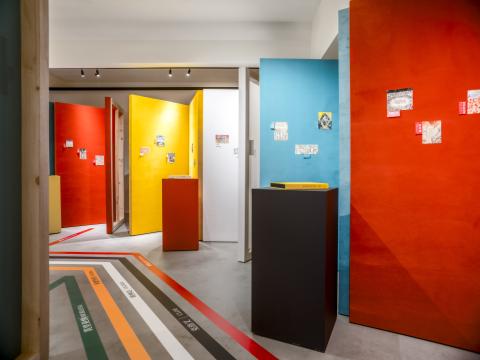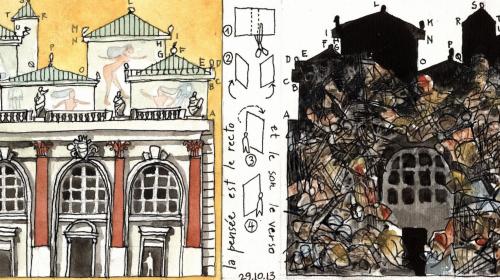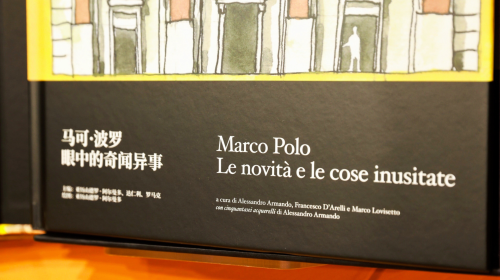
In the footsteps of Marco Polo: DAD goes to Shanghai
“You do not enjoy a city for its seven or seventy-seven wonders, but for the answer it gives to one of your questions.” With these words, Marco Polo addresses Emperor Kublai Khan in Invisible Cities by Italo Calvino. From that dialogue arises the exhibition “Marco Polo. Le novità e le cose inusitate” (“The New and Unusual Things”), which lands in Shanghai as a bridge between cultures, eras, and languages.
Inaugurated on Thursday, October 30, and open to the public until November 21, the exhibition is promoted by the Italian Cultural Institute of Shanghai and the Consulate General of Italy in Shanghai, in collaboration with the Department of Architecture and Design (DAD) and the communication agency Attila Shanghai.
Hosting the exhibition is the House of Attila, a villa from the early 20th century: 700 square meters of architectural elegance nestled among the tree-lined streets of the historic center, just a short walk from the Italian Consulate and the famous Bund, where early-century colonial buildings meet the skyscrapers of contemporary Shanghai. Restored and reinterpreted by architect Aldo Cibic with the Cibic Workshop team, the space embodies the dialogue between memory and modernity that the exhibition seeks to evoke — a place where Italian design encounters the creative vitality of a city in constant transformation.
Just before the exhibition, in September 2025, the volume “Marco Polo. Le novità e le cose inusitate” was published, produced by the Italian Cultural Institute of Shanghai in collaboration with DAD and supported by the Consulate General of Italy, concluding the celebrations for the 700th anniversary of Marco Polo’s death (1324–2024).
Like the book, the exhibition intertwines past and present, East and West, in a journey that celebrates imagination and cultural exchange.
The visitor is guided by two masterpieces of Italian literature: The travels (Il MIlione) of Marco Polo and Invisible Cities by Italo Calvino. Their words accompany a journey through fifty-six unpublished watercolors by Professor Alessandro Armando from DAD, who gives shape and color to Calvino’s fifty-five (plus one) imagined cities. The works, suspended between reality and vision, invite the public to explore the inner geographies of travel and discovery.
“A project that began as a game,” says Professor Alessandro Armando. “I drew the invisible cities more than ten years ago, on the occasion of a collective reading organized by the Cesare Pavese Foundation. The game was to read one city per day: that’s how I began, and for fifty-six days I drew each evening for no more than two hours. After that event, the drawings stayed in a drawer, until I was asked to use them for the Biennale Tecnologia exhibition and, at the same time, to create the book with the Italian Cultural Institute.”
The exhibition opens with a long corridor introducing a topographic map of the invisible cities, accompanied by quotes from The Travels and Calvino’s text. From there, visitors enter a spiral-shaped space designed as an immersive sensory journey: they can move freely among the artworks, guided by curiosity and the evocative power of images and words.
In this poetic and perceptual journey, Calvino’s cities — once invisible — become visible. Visitors can discover Anastasia, constantly changing and understandable only through experience; Clarice, visible only in solitude; Octavia, the spider-web city suspended over an abyss; or Zobeide, born of a dream and built as a weave of desires. Each takes form in the watercolors, true windows into imagination, suspended between the memory of the Venetian traveler and the vision of the 20th-century writer.
With this exhibition, the House of Attila inaugurates itself as a new hub for Italian creativity and cultural dialogue in Shanghai. The initiative represents an ideal bridge between two worlds that have observed, inspired, and transformed each other for centuries — in a city that, like Calvino’s “invisible” ones, lives in perpetual metamorphosis and tells new stories each day of exchange, imagination, and rebirth.
“The most surprising thing about these drawings,” continues Professor Armando, “is that over the years they’ve sparked new encounters: seminars, exhibitions, and now a book and even an inauguration in Shanghai, with an installation designed together with young architects from Fluidiforme, Davide Casaletto and Antonino Caridi. As if that weren’t enough, the event expanded to include the guitar duo Chiaramonti–Salvini, who came here especially to give a master class and perform the suite “Le città invisibili” composed by maestro Giorgio Mirto. In short, Calvino’s little book has set many creative minds in motion, making possible precious and unexpected encounters.”
To crown the exhibition, on Friday, October 31, a joint seminar will be held at Tongji University, at the College of Architecture and Urban Planning. Professor Armando and the Director of the Italian Cultural Institute of Shanghai, Francesco D’Arelli, will share reflections on reading Invisible Cities in relation to architecture and composition. The event will be accompanied by the performance of Le città invisibili suite by the guitar duo Michelangelo Salvini and Niccolò Chiaramonti — blending art, architecture, music, and literature into a single dialogue.
